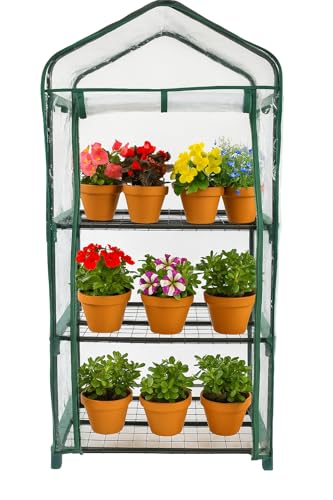Understanding the Importance of Temperature Control in Greenhouses
A greenhouse is a man-made structure primarily used for growing plants, vegetables, and fruits. The greenhouse provides an enclosed environment that preserves warmth and moisture to facilitate plant growth, resulting in high-quality yields. However, to maintain plant growth, temperature control is a crucial aspect that every gardener must consider. When used correctly, temperature control can help gardeners avoid underdevelopment, plant curling and color changes, and mold growth.
The Various Methods You Can Use To Control Temperature
When it comes to controlling temperatures, gardeners have multiple options to choose from and utilize.
- Ventilation: It is an excellent option for greenhouse temperature control. As plants give off moisture through transpiration, it adds humidity into the atmosphere. Ventilation can help maintain the optimal temperature and humidity level by reducing the humidity in the greenhouse. Gardeners can use doors, windows, wall vents, or ridge vents to control ventilation.
- Heating: Heating is essential during the cold season. Commercial growers use different heating systems like furnaces, boilers, and space heaters to maintain the desired temperatures in the greenhouse. Smaller gardeners can use space heaters or electric heaters to heat their greenhouses.
- Cooling: Cool shading, evaporative cooling, and misting can be useful for reducing temperatures in the greenhouse during excessive heat conditions.
- Light management: A greenhouse that receives significant sun exposure can become too hot for plants. Using shade cloths and other methods to manage light exposure can help gardeners control temperature and humidity levels.
Digital Solutions for Temperature Control
There are several digital solutions that gardeners can use to control greenhouse temperatures. One of the main benefits of digital temperature control is that it allows for precise control, which can improve the effectiveness of heating, cooling, and ventilation. Digital tools also enable remote monitoring, saving time and energy. Smart thermostats, temperature sensors, and monitoring systems can help gardeners measure, monitor, and maintain the ideal greenhouse temperature.
How to Determine the Right Temperature
The ideal greenhouse temperature depends on the season and what crops you are growing. Different plants require different temperature and humidity conditions for growth. A temperature gauge or a thermometer can prove useful when determining the right temperature. You can place it at plant height since plant heights vary, and it will help you determine if the temperature is optimal for the specific crop. Gardening books and resources can also prove useful for determining the ideal temperature and humidity levels for plants.
Why Temperature Control is Important
Temperature control is crucial in greenhouse gardening. Improper temperature management can affect growth rates, yields, and plant quality. Gardeners can use various techniques like ventilation, heating, cooling, and light management to regulate greenhouse temperatures. Digital tools can also help improve temperature control and monitoring. Finally, determining the right temperature depends on the season and the crops you are growing.






